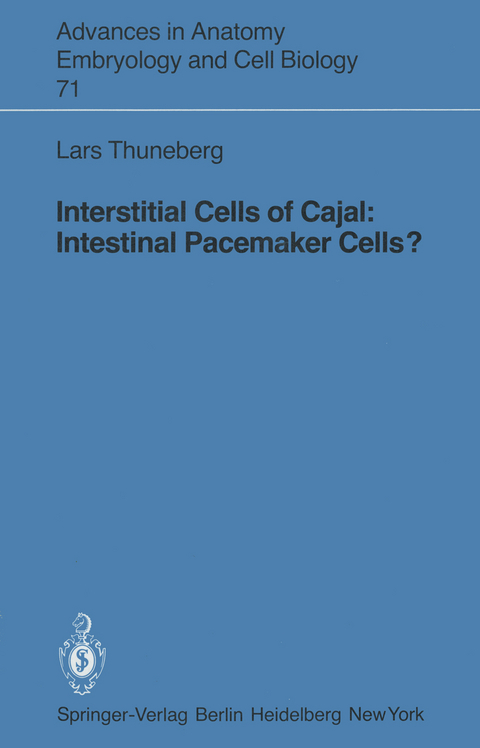
Interstitial Cells of Cajal: Intestinal Pacemaker Cells?
Springer Berlin (Verlag)
978-3-540-11261-7 (ISBN)
1 Introduction.- 1.1 Survey of Literature on ICC.- 1.2 Contraction "Waves" and Nodes of Smooth Muscle.- 2 Material and Methods.- 3 Results.- 3.1 Survey of the Organization of the Serosa and Muscularis Externa.- 3.2 Interstitial Cells Associated with Auerbach's Plexus.- 3.3 Interstitial Cells of the Subserous Compartment and Within the Longitudinal Muscle Layer.- 3.4 Interstitial Cells Associated with Plexus Muscularis Profundus (Cajal).- 3.5 Interstitial Cells Within the Outer, Main Layer of Circular Muscle.- 3.6 Contraction Patterns of Muscularis Externa.- 3.7 Mechanisms of the Supravital Methylene Blue Staining Technique: Results and Discussion.- 4 Discussion.- 4.1 General Organization of Muscularis Externa.- 4.2 Topographical Relations of ICC (-I and -II) to Cells of the Longitudinal Muscle Layer.- 4.3 Topographical Relations of ICC (-I, -III, and -IV) to Cells of the Circular Muscle Layer.- 4.4 Nature of ICC.- 4.5 Contraction "Waves" and Nodes: Relations to Auerbach's Plexus and Associated ICC.- 4.6 Functions of ICC (and MLC).- 4.7 Conclusion.- 4.8 Perspective.- 5 Summary.- References.
| Erscheint lt. Verlag | 1.4.1982 |
|---|---|
| Reihe/Serie | Advances in Anatomy, Embryology and Cell Biology |
| Zusatzinfo | VIII, 132 p. 37 illus. |
| Verlagsort | Berlin |
| Sprache | englisch |
| Maße | 170 x 244 mm |
| Gewicht | 300 g |
| Themenwelt | Studium ► 1. Studienabschnitt (Vorklinik) ► Anatomie / Neuroanatomie |
| Schlagworte | Cells • Nucleus interstitialis Cajal • Plexus myentericus |
| ISBN-10 | 3-540-11261-8 / 3540112618 |
| ISBN-13 | 978-3-540-11261-7 / 9783540112617 |
| Zustand | Neuware |
| Haben Sie eine Frage zum Produkt? |
aus dem Bereich


